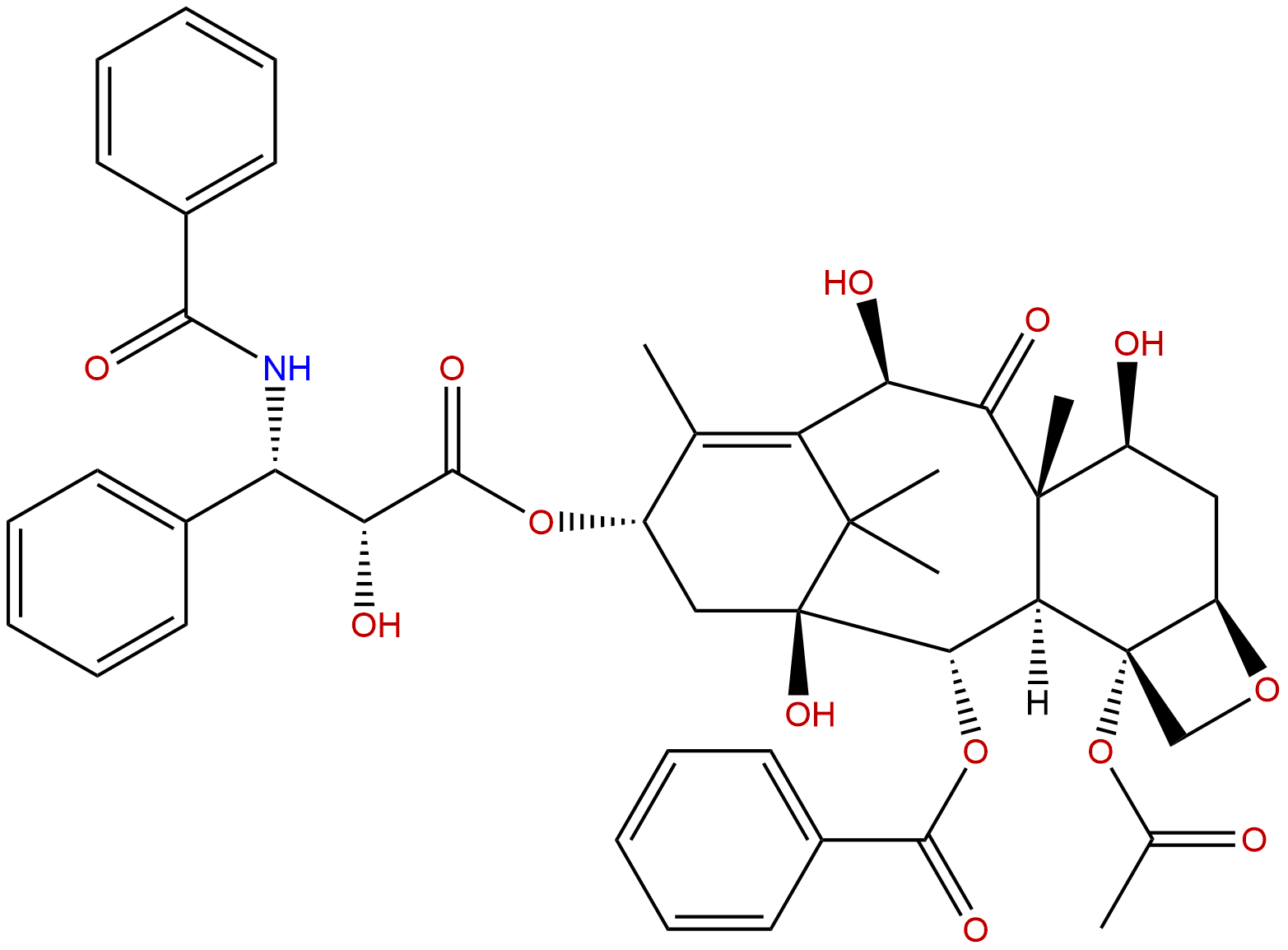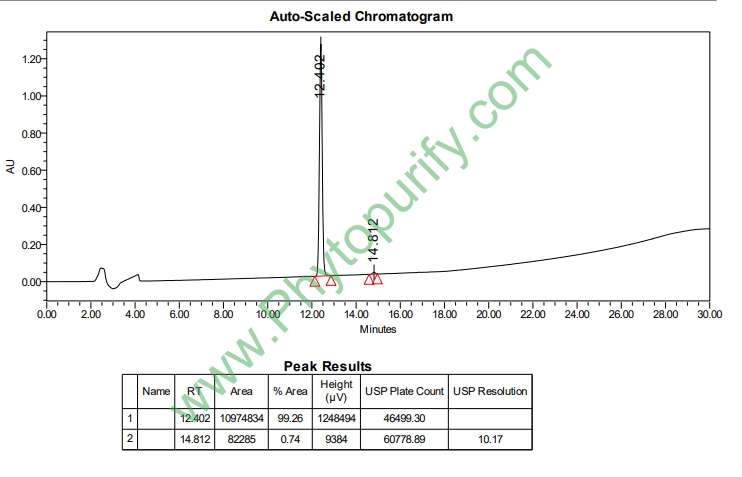
10-DeacetyltaxolCAS No.:78432-77-6 |
||||||||||
 |
|
|
||||||||

| Catalogue No.: | BP0012 |
| Formula: | C45H49NO13 |
| Mol Weight: | 811.881 |
| Botanical Source: | Taxus chinensis |
Synonym name:
Catalogue No.: BP0012
Cas No.: 78432-77-6
Formula: C45H49NO13
Mol Weight: 811.881
Botanical Source: Taxus wallichiana, Taxus mairei and Cephalotaxus mannii
Purity: 95%~99%
Analysis Method: HPLC-DAD or/and HPLC-ELSD
Identification Method: Mass, NMR
Packing: Brown vial or HDPE plastic bottle
Can be supplied from milligrams to grams.
For Reference Standard and R&D, Not for Human Use Directly.
Inquire for bulk scale.
Description:
10-Deacetyltaxol and cephalomannine have cytotoxicity in human glial and neuroblastoma cell-lines, the tumors of the central and peripheral nervous system are sensitive to 10-deacetyltaxol and cephalomannine and these drugs are less toxic than taxol but remain within a therapeutic range.
References:
Int. J.Oncol., 1993, 2(2):297-9.
Cephalomannine and 10-deacetyltaxol cytotoxicity in human glial and neuroblastoma cell-lines.
METHODS AND RESULTS:
The cytotoxic effects of taxol, 10-Deacetyltaxol, and cephalomannine at concentrations of 0.1 mug/ml to 10.0 mug/ml for one and 24 hours exposure were determined in two human glioblastoma multiforme and two neuroblastoma cell lines using the MTT method. The neuroblastoma cell lines were established from previously treated patients, while the glioblastomas were from untreated patients. There was a proportionate concentration-toxicity relationship for all four cell lines. The neuroblastoma SK-N-FI was consistently the most resistant to all three drugs. The order of potency after a one hour exposure was taxol, 10-Deacetyltaxol and cephalomannine. Cephalomannine contained 1.5% taxol impurity and 10-Deacetyltaxol, 4.5% taxol hence the contribution of taxol to these substances' toxic effects was minimal.
CONCLUSIONS:
We conclude that tumors of the central and peripheral nervous system are sensitive to 10-Deacetyltaxol and cephalomannine and these drugs are less toxic than taxol but remain within a therapeutic range.
HPLC of 10-Deacetyltaxol
